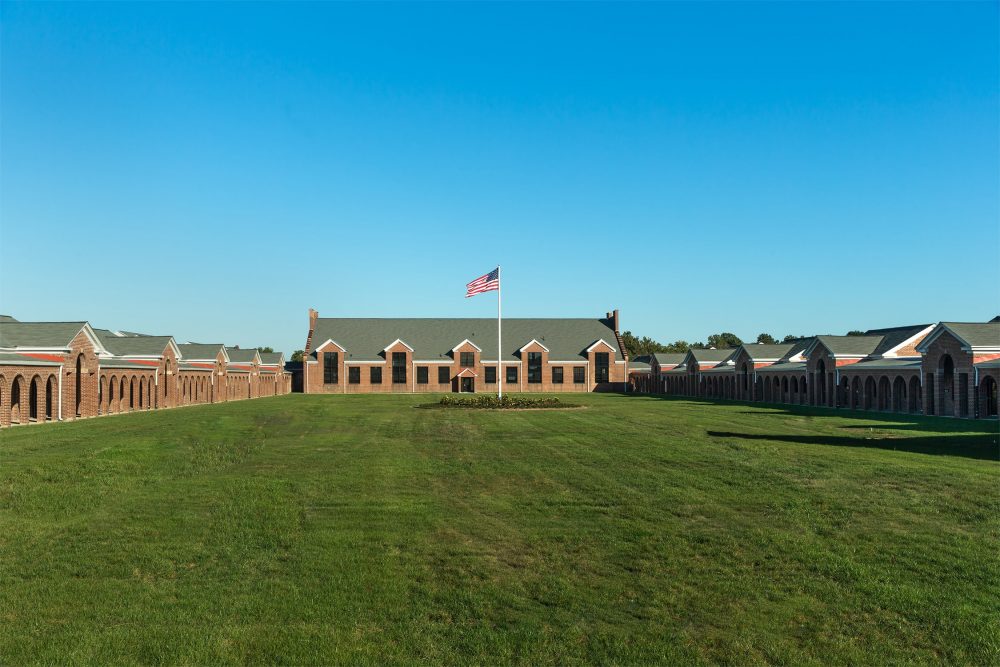A team of developers is readying to launch the conversion of the former Lorton Prison complex into a mixed-use village. And they will call it Liberty Crest at Laurel Hill.
Yes, a former prison campus, home to thousands of D.C. inmates over 85 years until its closure in 2001, will be renamed “Liberty.” And we have our first look at the $150 million project, which will bring roughly 350 residential units of varying type and more than 110,000 square feet of commercial and retail space to the Interstate 95 corridor in southeastern Fairfax County.
The Alexander Co. of Madison, Wisconsin, the site’s master developer, is scheduled to break ground Dec. 7 on the first of two phases of Liberty Crest. The overall project, a partnership with Fairfax County, will retain and reuse all but six of the 55 historic structures on site.
“As a part of our history and culture, places like Lorton Prison must be restored and preserved for future generations,” Joe Alexander, president of The Alexander Co., said in a statement. “Through the joint efforts of private developers and the public sector, we can save more of these landmarks.”
Phase 1, scheduled for delivery by spring of 2017, involves the conversion of the prison reformatory into 165 rental apartments (45 affordable), the construction of 83 townhomes and 24 single-family detached homes, and the conversion of the chapel and power center into retail and commercial space.
Phase 2 will include 74 new townhomes, six condos carved out of a guardhouse, and 110,000 square feet of commercial and retail space in a mix of new development and adaptive reuse.
The Alexander Co., a specialist in historic preservation and infill projects, is leading the way as developer. Its partners include Elm Street Development(retail), Van Metre Homes (single-family), architects Lessard Design and Bignell Watkins Hasser, landscape architect Studio 39, and contractors William A. Hazel and Southway Builders Inc.
The 2,323-acre Lorton Prison campus opened in 1916 for District of Columbia inmates, who were tasked with constructing the buildings themselves from bricks manufactured on site and lumber cut from Lorton trees — an effort to reform and apply new trade skills. Fairfax County paid the General Services Administration $4.2 million to acquire the title in 2002. The land (once home to a U.S. air defense missile installation) was then subdivided for various uses — becoming the Laurel Hill subdivision and the Spring Hill Senior Campus, the Workhouse Arts Center, a golf course and the site of a future county government facility.
Fairfax retained the 80-acre core prison — including the cell blocks, guard towers, reformatory, gymnasium, dining hall and chapel — and tapped Alexander in 2008 to master plan it. That plan was finally approved in June 2014.
“This is going to be an exciting new community,” Alexander said. “Living in a reinvented historic building is a unique experience, and being surrounded by places to play, work, eat, and learn only heighten that experience.”

